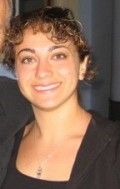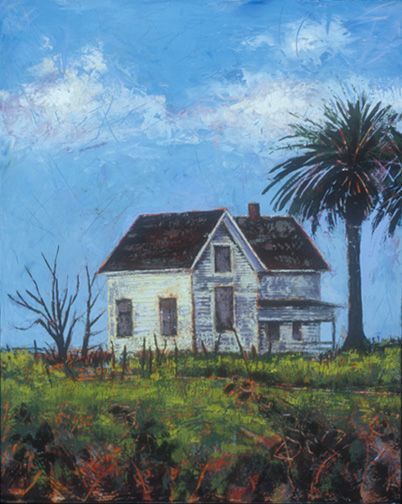 Another voice in support of public healthcare reform is coming from family practice residents in Santa Rosa.
Another voice in support of public healthcare reform is coming from family practice residents in Santa Rosa.
 America's current health care system is deeply flawed in its capacity to deliver care to the patients who need it, says Dr. Rachel Friedman (left), which is the fundamental reason she is advocating for systemic reforms.
America's current health care system is deeply flawed in its capacity to deliver care to the patients who need it, says Dr. Rachel Friedman (left), which is the fundamental reason she is advocating for systemic reforms.
 Those inequities in care, which are driven by disparities in health insurance coverage, tend to give doctors a narrower range of patients to work with, observes Dr. Veronica Jordan (right), while her ideal would be to see a more fully representative spectrum of people in her daily practrice.
Those inequities in care, which are driven by disparities in health insurance coverage, tend to give doctors a narrower range of patients to work with, observes Dr. Veronica Jordan (right), while her ideal would be to see a more fully representative spectrum of people in her daily practrice.
The activism that Drs. Friedman and Jordan are engaged in is not unusual, Friedman adds. Most of their residency classmates have joined in, and they have many counterparts across the country.

 The political differences that divide progressives and conservatives run deeper than policies and opinions, says linguist and analyst George Lakoff, they are embedded deep within the brain itself.
The political differences that divide progressives and conservatives run deeper than policies and opinions, says linguist and analyst George Lakoff, they are embedded deep within the brain itself.
UC Berkeley professor George Lakoff is primarily a linguist, and here he explains how that background leads to the political applications that form the basis of his current book, The Political Mind: A Cognitive Scientist’s Guide to Your Brain and its Politics.
 George Lakoff(right) will read from The Political Mind at Copperfields Books in Montgomery Village Sunday afternoon, September 13th at 2 pm.
George Lakoff(right) will read from The Political Mind at Copperfields Books in Montgomery Village Sunday afternoon, September 13th at 2 pm.

President Obama has been praised for actively re-entering the debate over health care reform with his address to Congress this week, but Lakoff says the administration is still bound by a policy-driven approach that stints on making an essential emotional connection with the American electorate.

Preserving biological diversity isn’t the only reason for protecting endangered plant species—in some cases, its good for our health, too.
United Plant Savers emerged in the 1990s, primarily in response to the depletion of naturally occurring supplies of popular medicinal herbs, explains Executive Director Lynda LeMole. Until that time, most of them were harvested by hand, in a process known as “wild-crafting.”
 While herbal medicine is most commonly associated with the orient, eastern practitioners have long had a keen appreciation for certain medicinal plants from North America, especially American Ginseng, seen being harvested at left.
While herbal medicine is most commonly associated with the orient, eastern practitioners have long had a keen appreciation for certain medicinal plants from North America, especially American Ginseng, seen being harvested at left.
Commercial cultivation of many medicinal herbs is complicated by the challenges in replicating their natural growing conditions, particularly for those, like American Ginseng, that are found on the forest floor. Even here in Sonoma County, where conditions favor a wide range of crops, many sensitive herbs will not thrive. That's another factor complicating the preservation of the "at risk" herbs on the list below.
United Plant Savers “At-Risk” List
-
American Ginseng - Panax quinquefolius
-
Black Cohosh - Actaea racemosa (Cimicifuga)
-
Bloodroot - Sanguinaria canadensis
-
Blue Cohosh - Caulophyllum thalictroides
-
Echinacea - Echinacea spp.
-
Eyebright - Euphrasia spp.
-
False Unicorn Root - Chamaelirium luteumGoldenseal - Hydrastis canadensis
- Lady’s Slipper Orchid - Cypripedium spp.
-
Lomatium - Lomatium dissectum
-
Osha - Ligusticum porteri, L. spp.
-
Peyote - Lophophora williamsii
-
Slippery Elm - Ulmus rubra
-
Sundew - Drosera spp.
-
Trillium, Beth Root -Trillium spp.
-
True Unicorn - Aletris farinosa
-
Venus’ Fly Trap - Dionaea muscipula
-
Virginina Snakeroot - Aristolochia serpentaria
-
Wild Yam - Dioscorea villosa, D. spp.
 There is a full list of botanical sanctuaries (including three in northern California) among the resources at the United Plant Savers website.
There is a full list of botanical sanctuaries (including three in northern California) among the resources at the United Plant Savers website.
 Lynda LeMole, Executive Director of United Plant Savers, will be the featured speaker tonight at the Science Buzz Café in their new home at the Youth Annex adjacent to the Sebastopol Community Center, at 7 pm.
Lynda LeMole, Executive Director of United Plant Savers, will be the featured speaker tonight at the Science Buzz Café in their new home at the Youth Annex adjacent to the Sebastopol Community Center, at 7 pm.
 Employees at Santa Rosa Memorial Hospital are one step closer to a union representation vote, something that could come within a matter of a few weeks.
Employees at Santa Rosa Memorial Hospital are one step closer to a union representation vote, something that could come within a matter of a few weeks.
 Steve Sidawi, a volunteer organizer with the National Union of Healthcare Workers, traces the history of the unionization effort at Memorial Hospital.
Steve Sidawi, a volunteer organizer with the National Union of Healthcare Workers, traces the history of the unionization effort at Memorial Hospital.
The administration at Memorial Hospital disputes that version of past events. Katy Hillenmeyer, spokeswoman for St. Joseph’s Health System, Sonoma County, says the company has precisely lived up to their legal responsibilities.
Sonoma County Supervisor Shirlee Zane sees taking a high-profile position on labor issues such as this one as part of her job, representing the workers within her district.


The Laguna de Santa Rosa Foundation has a new home—one that’s almost 150 years old.
Ken Churchill, who oversaw the restoration project, says they had to adhere to historical accuracy for the exterior, but inside was a different story.

This portrait of the aged farmhouse at the historic Stone Farm overlooking Occidental Road is by Calistoga painter Jocelyn Audette. The original now hangs inside the building itself.
The North Bay Report previously covered the early stages of the restoration of the civil war-era farmhouse as the project was getting started, back on August 9, 2007.
Since the Laguna Foundation was established, back in the early 1990s, Executive Director David Bannister says they have worked with considerable success to elevate public awareness of Sonoma County’s central ecological resource.
Below is a map of the full watershed that drains into the Laguna de Santa Rosa, outlined in orange. The Laguna itself flows into the Russian River at the upper left of this map, near Forestville.


 Live Radio
Live Radio